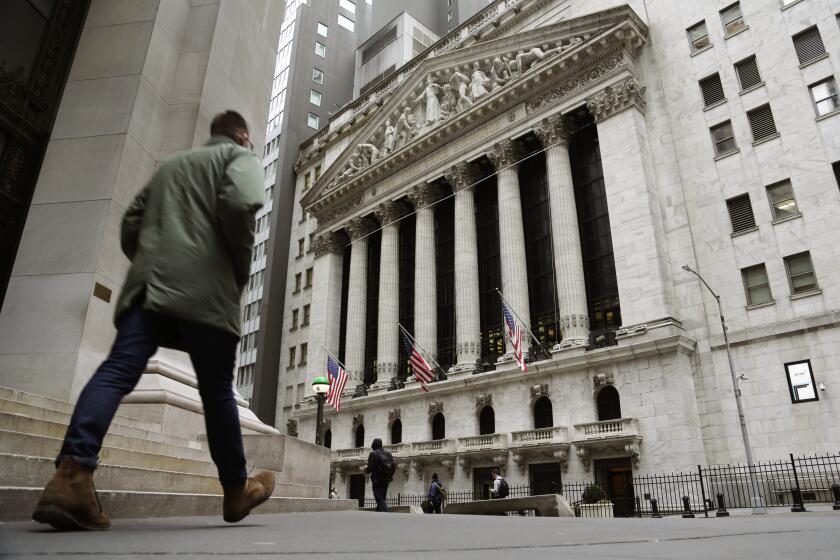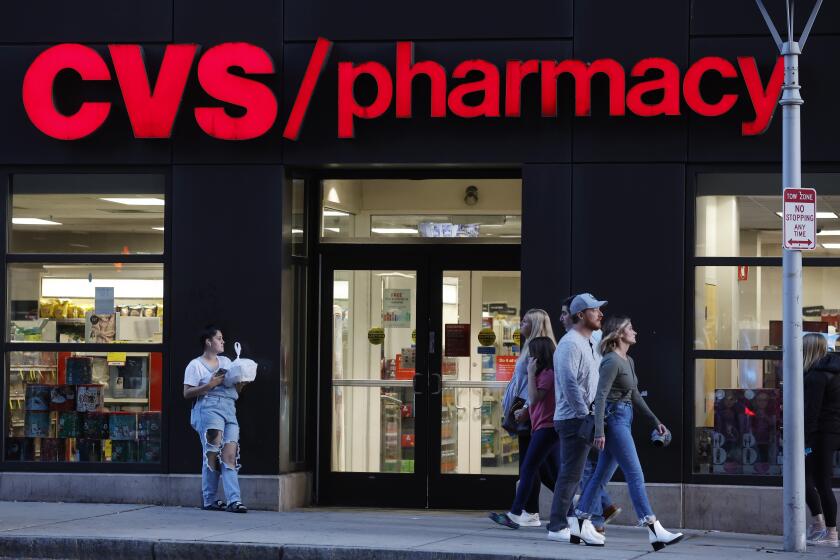PRC of Glendale OKs Acquisition by British Firm
- Share via
Products Research & Chemical Corp. in Glendale said Monday it agreed to be acquired by Courtaulds PLC, a British company, for about $260 million.
PRC makes coatings, sealants, adhesives and other specialty chemicals, and it earned $8 million on sales of $100.3 million in 1988. Courtaulds, a chemicals, textiles and industrial products concern, had bought 10.5% of PRC in May for $25 a share, or $21.7 million.
Under an agreement reached Friday, Courtaulds has begun a tender offer to buy the remaining 8.1 million PRC common shares outstanding for $32 a share.
The offer is scheduled to expire at midnight Aug. 4, unless it is extended.
The agreement sent PRC’s stock soaring on the New York Stock Exchange. The stock closed Monday at $31.625 a share, up $6.50, after jumping $2.625 Friday.
PRC’s top two executives--chairman George Gregory, 72, and chief executive Dean Willard, 42--said in a joint telephone interview that they would retain those positions when the company becomes a Courtaulds subsidiary.
The executives said PRC’s directors approved the deal because the offer price is attractive and because it would benefit PRC to be part of Courtaulds as the British company continues its aggressive effort to expand in the U.S. adhesives and coatings market.
Courtaulds wants to spend $500 million acquiring U.S. companies to increase its share of the market, “and this is not the sort of thing we could afford to do ourselves,” Gregory said. The British company hopes to generate sales of $500 million to $1 billion in adhesives and sealants “by further acquisitions to be folded into PRC,” he said.
Courtaulds’ initial investment in PRC called for the companies to exchange marketing and technical expertise. But had PRC stayed independent while Courtaulds continued buying PRC’s competitors, “there could be some conflicts,” Willard said.
“It just simply made sense to really take a hard look” at merging instead, he said.
Used by Military
PRC’s products are used by the military and a variety of commercial industries. They protect aircraft parts against corrosion and leakage, provide non-skid and anti-fire coating for the decks of aircraft carriers, and bond dual-paned windows used in skyscrapers, to name a few applications.
The company evolved from being a small distributor of chemicals into a manufacturer with its own proprietary technology under the leadership of Gregory, a Russian immigrant who joined the company in 1948 after earning a bachelor’s degree in chemistry from UCLA.
More to Read
Inside the business of entertainment
The Wide Shot brings you news, analysis and insights on everything from streaming wars to production — and what it all means for the future.
You may occasionally receive promotional content from the Los Angeles Times.











